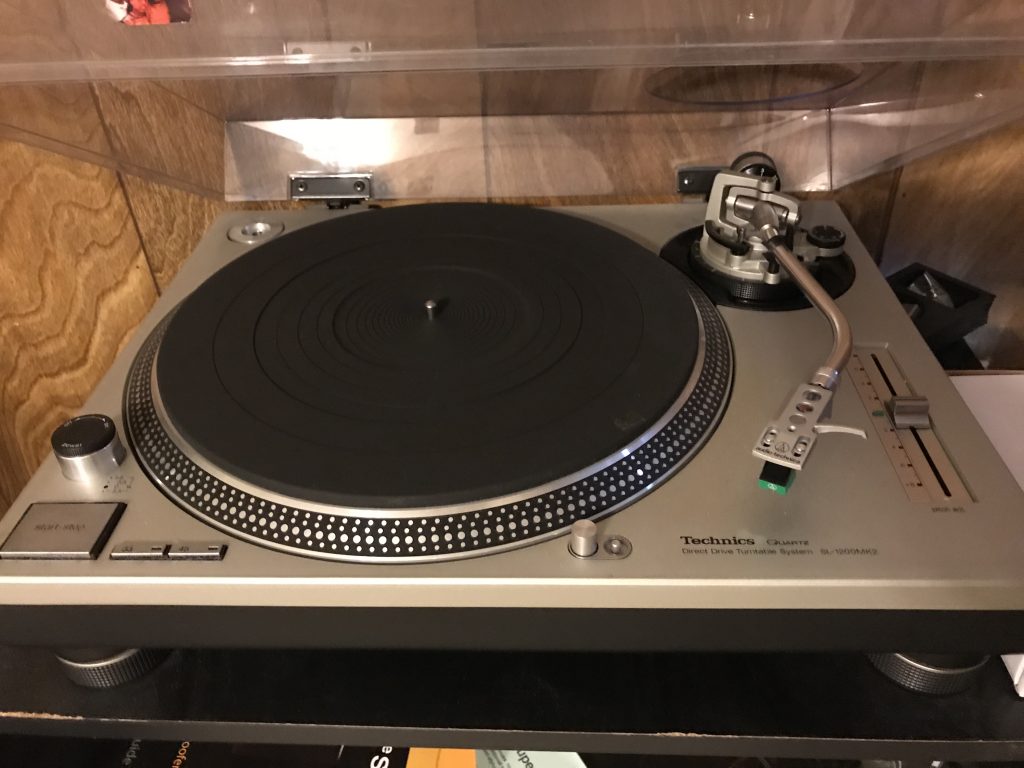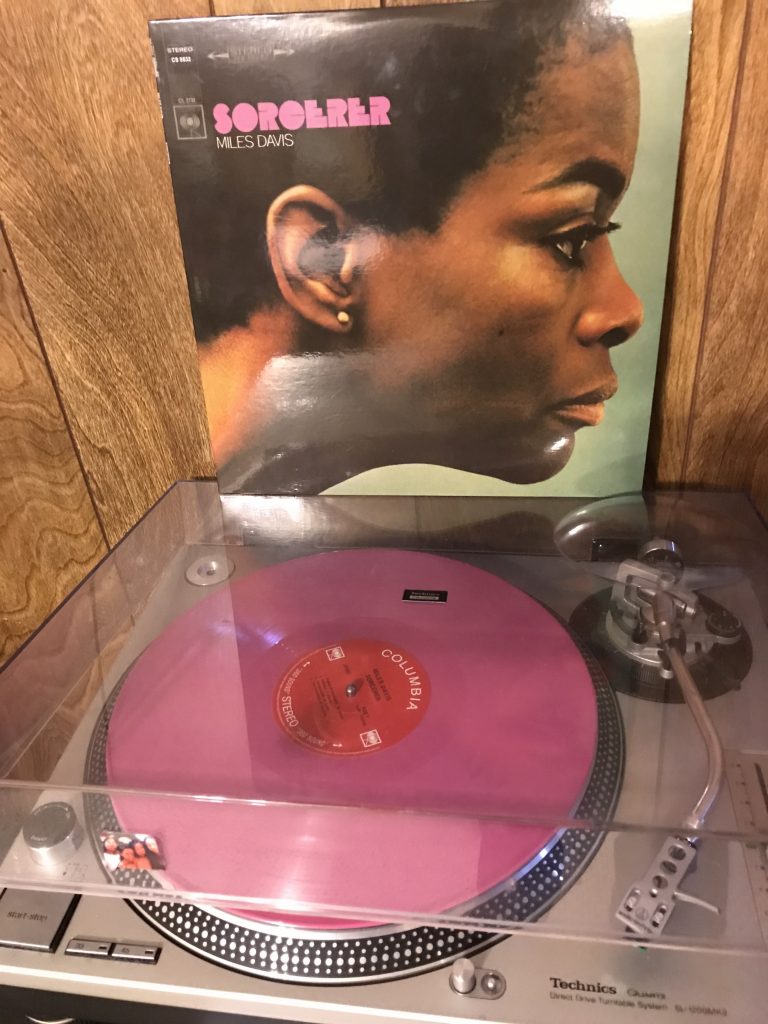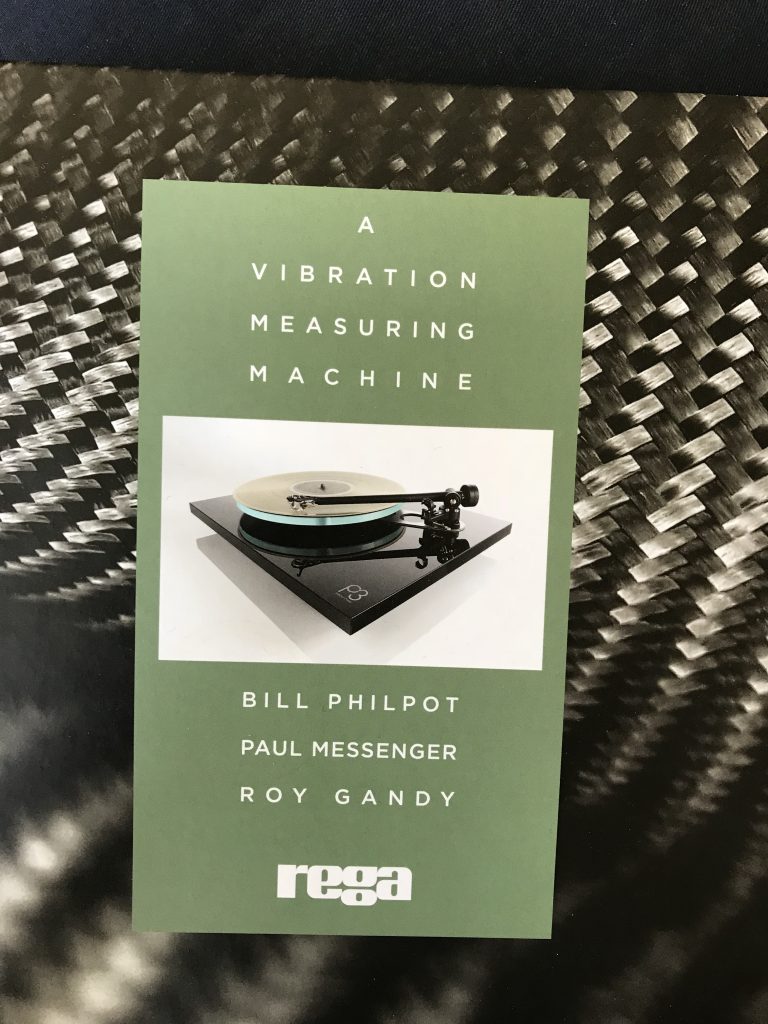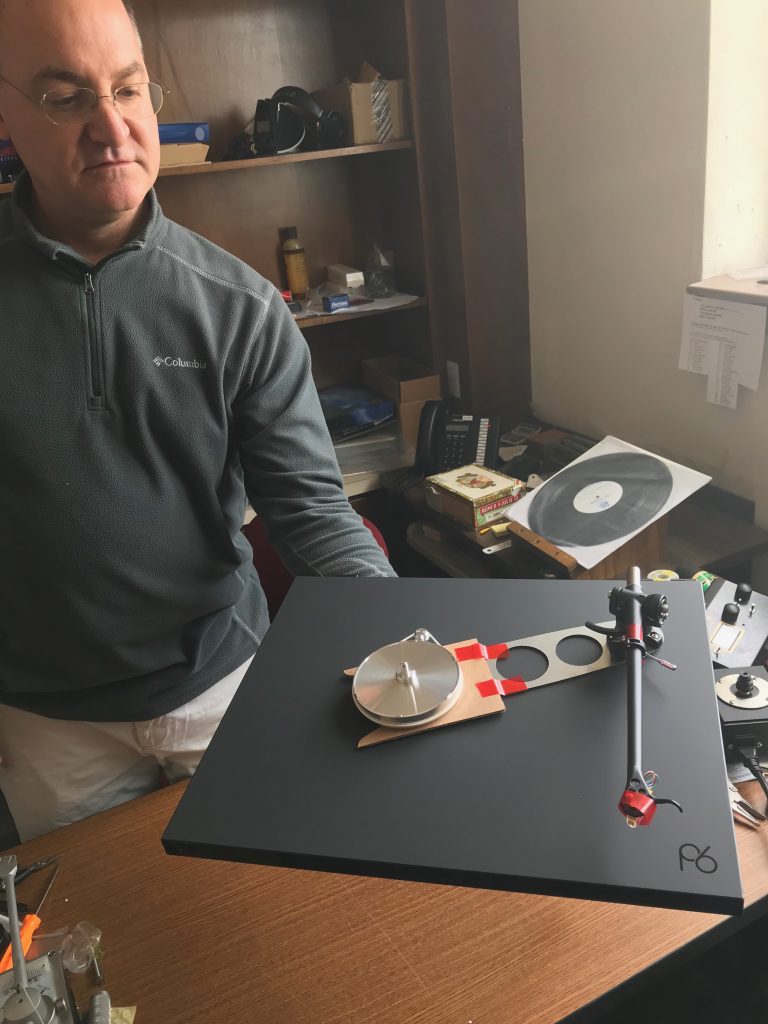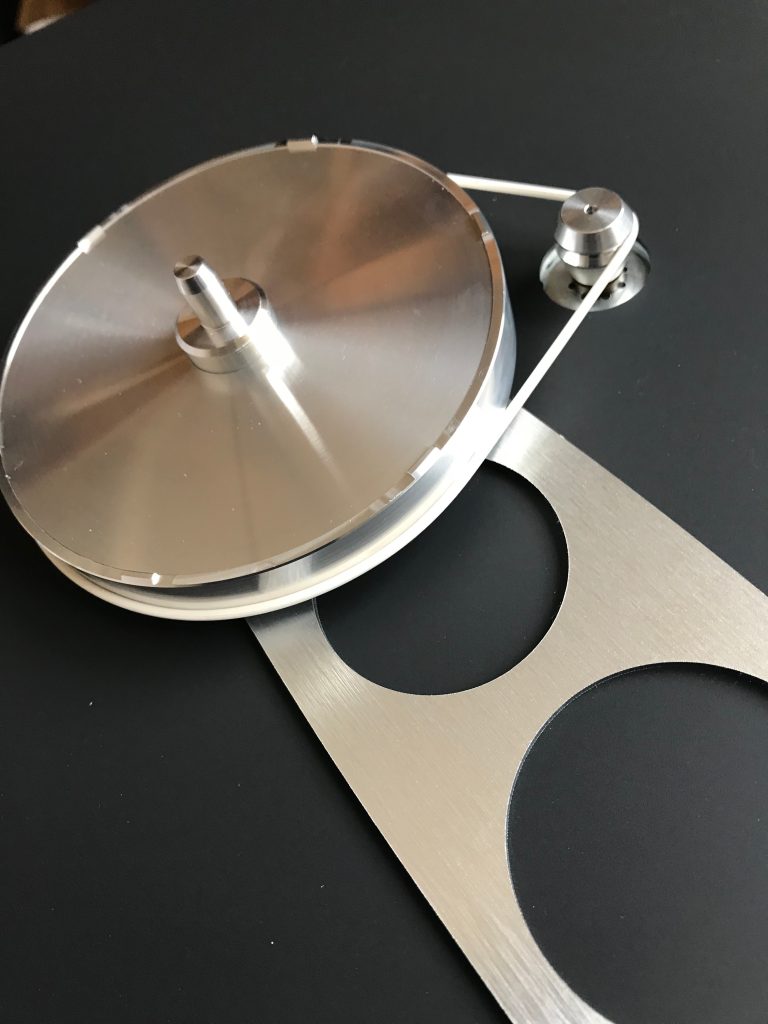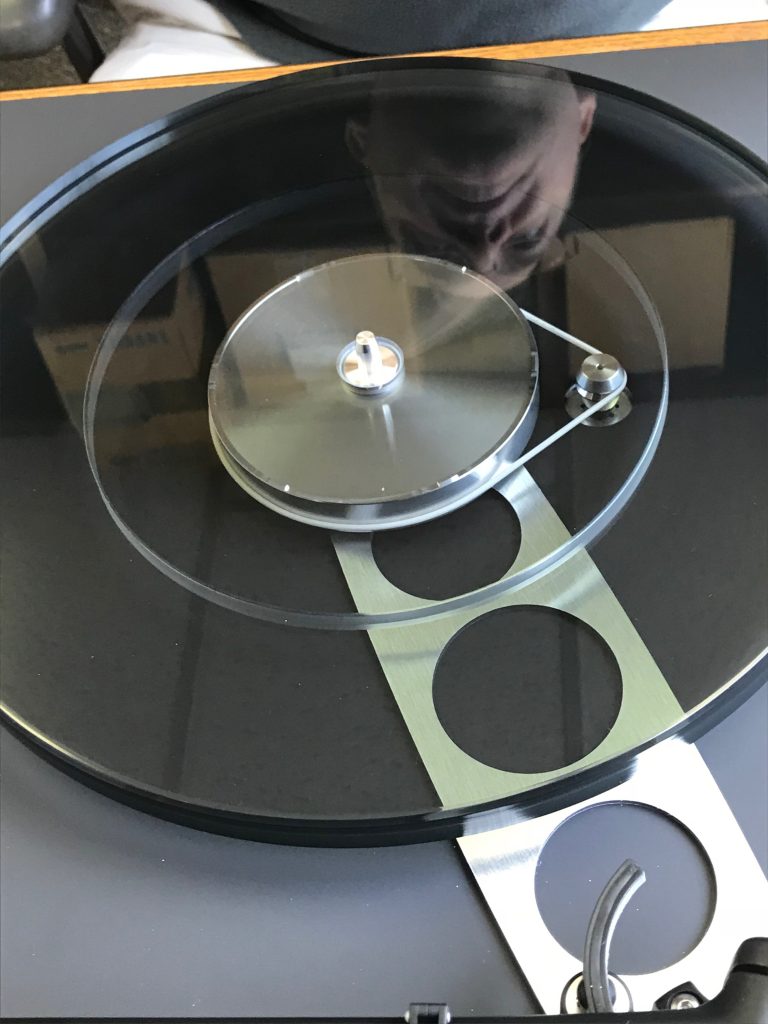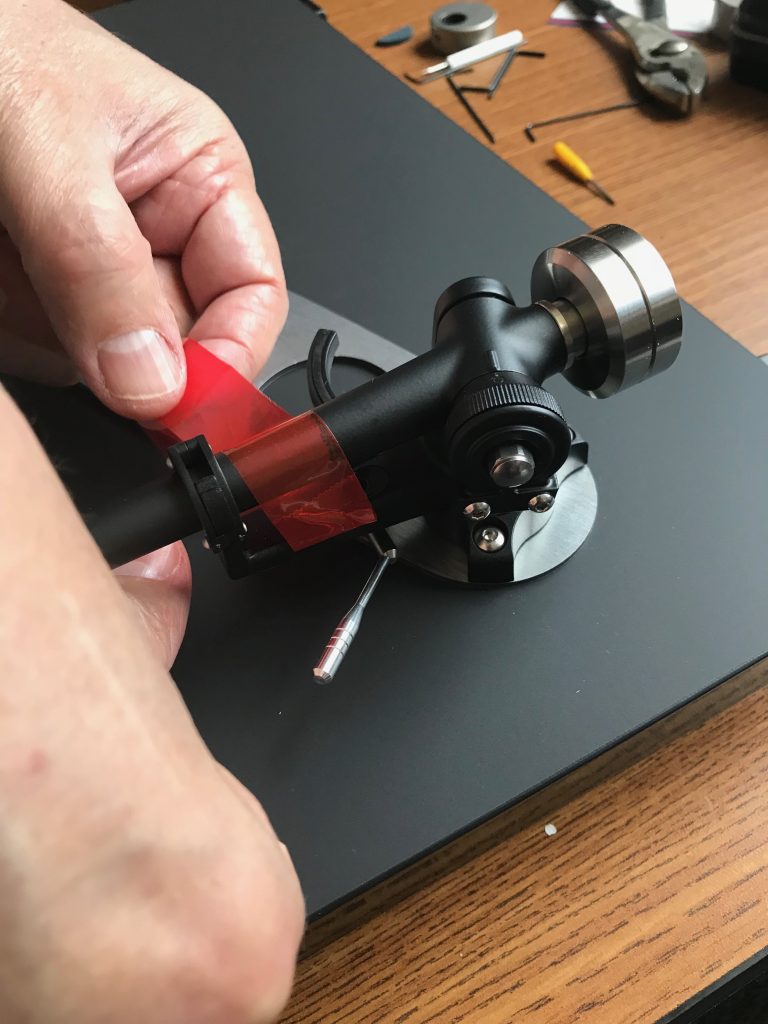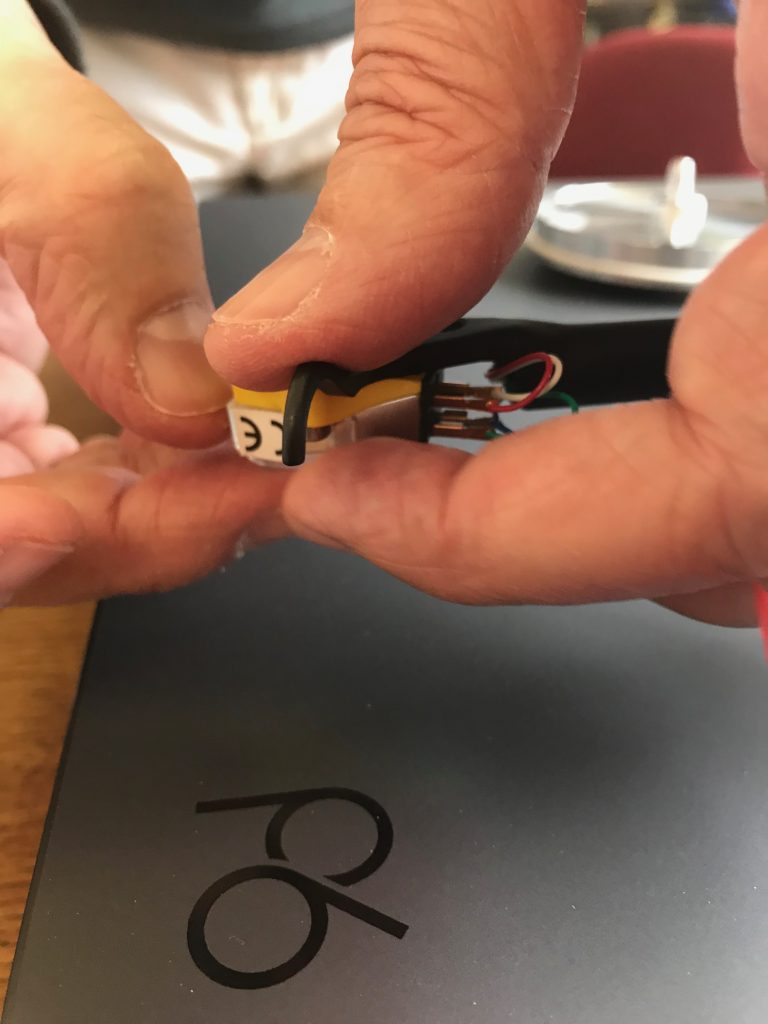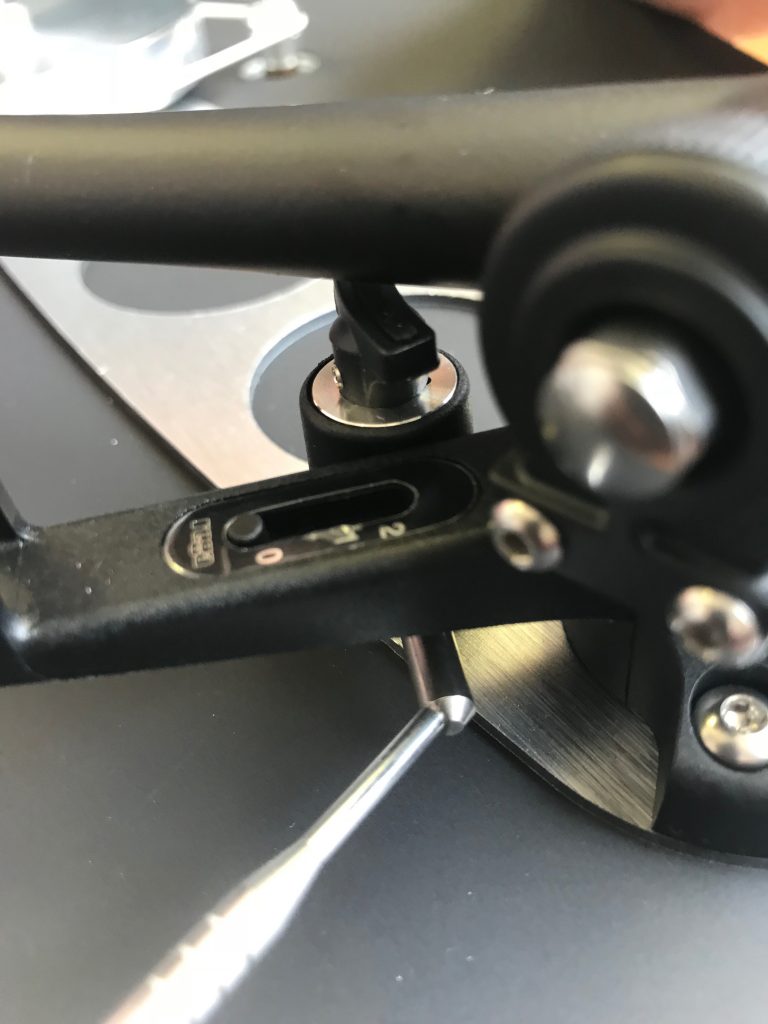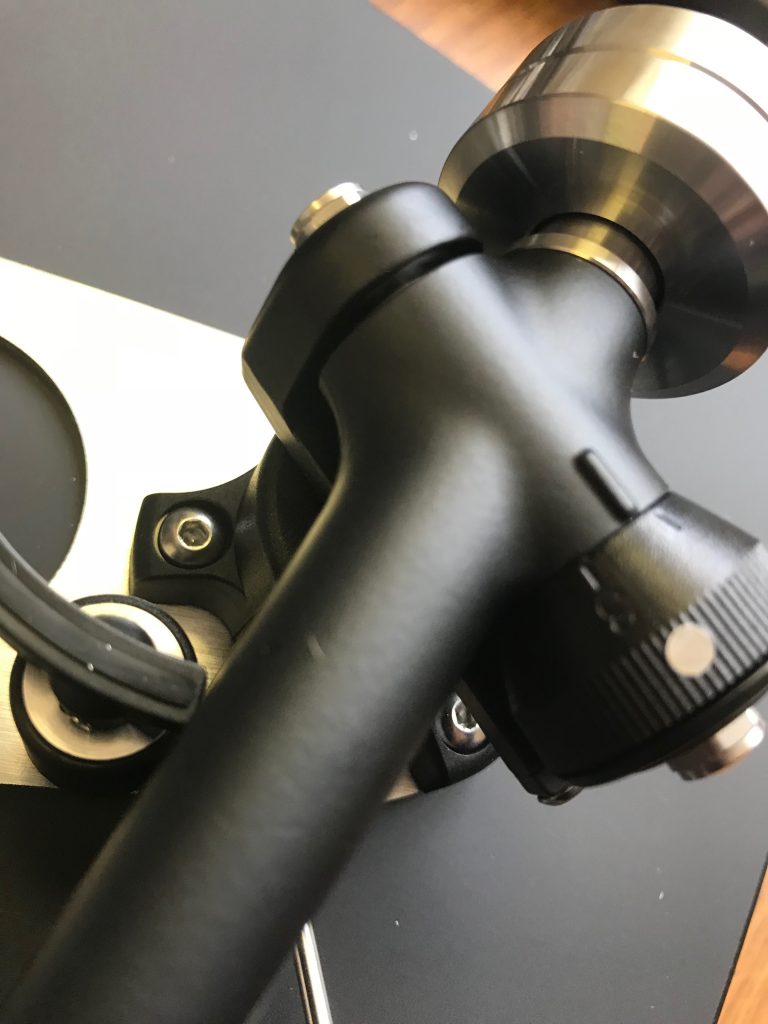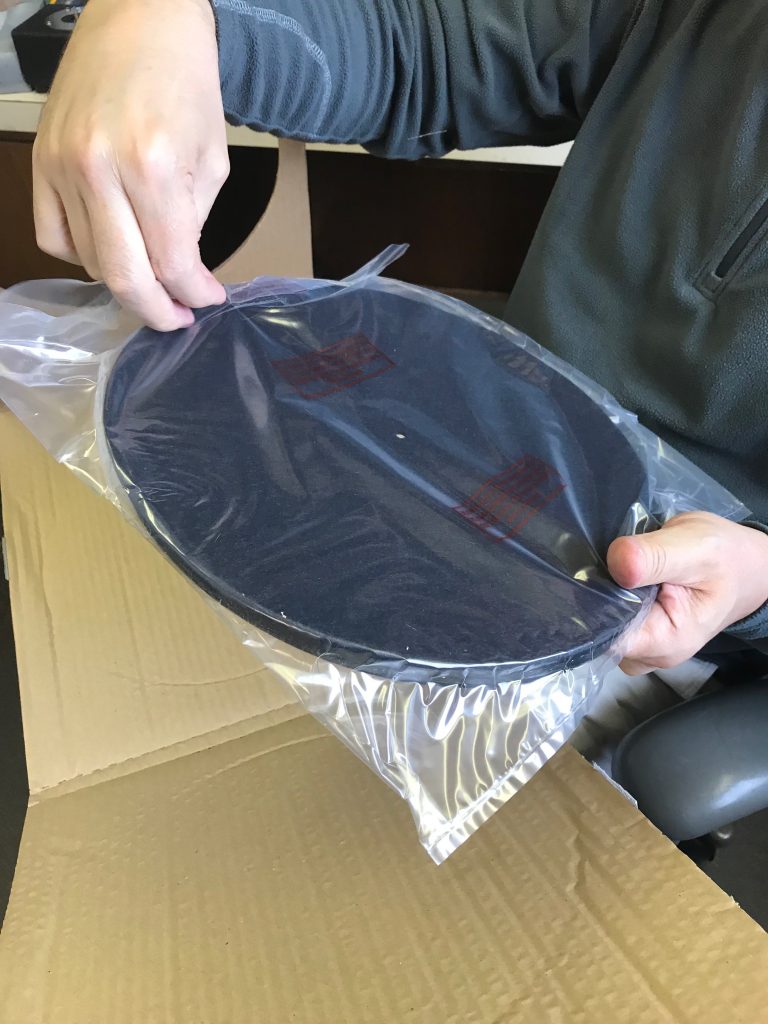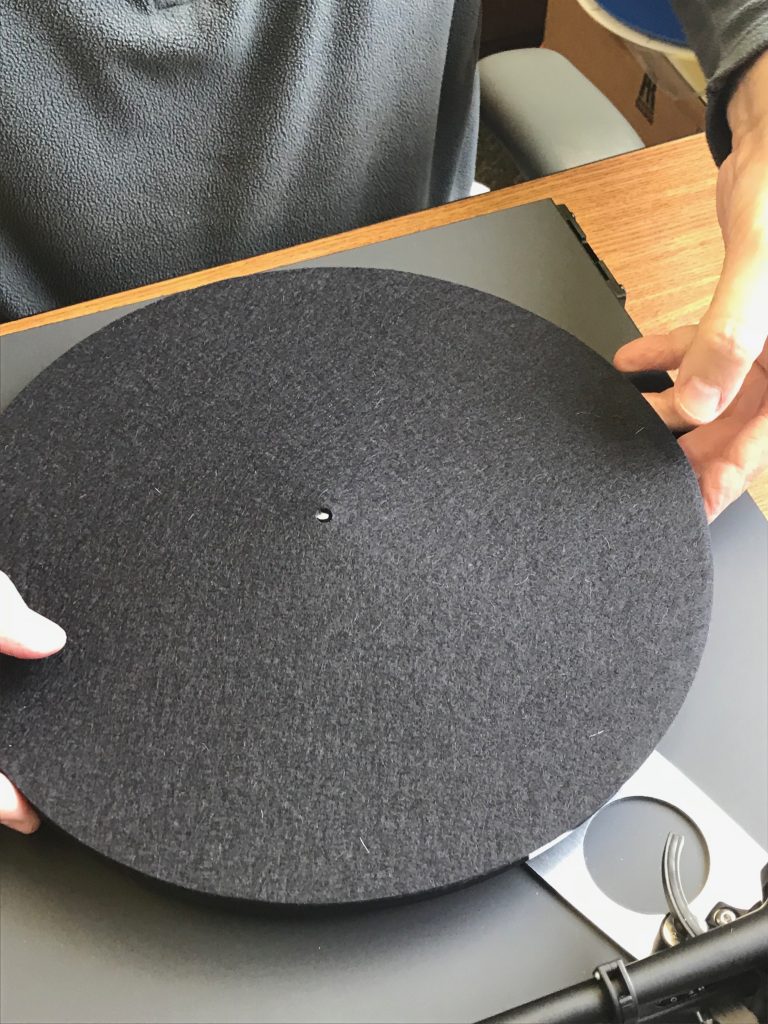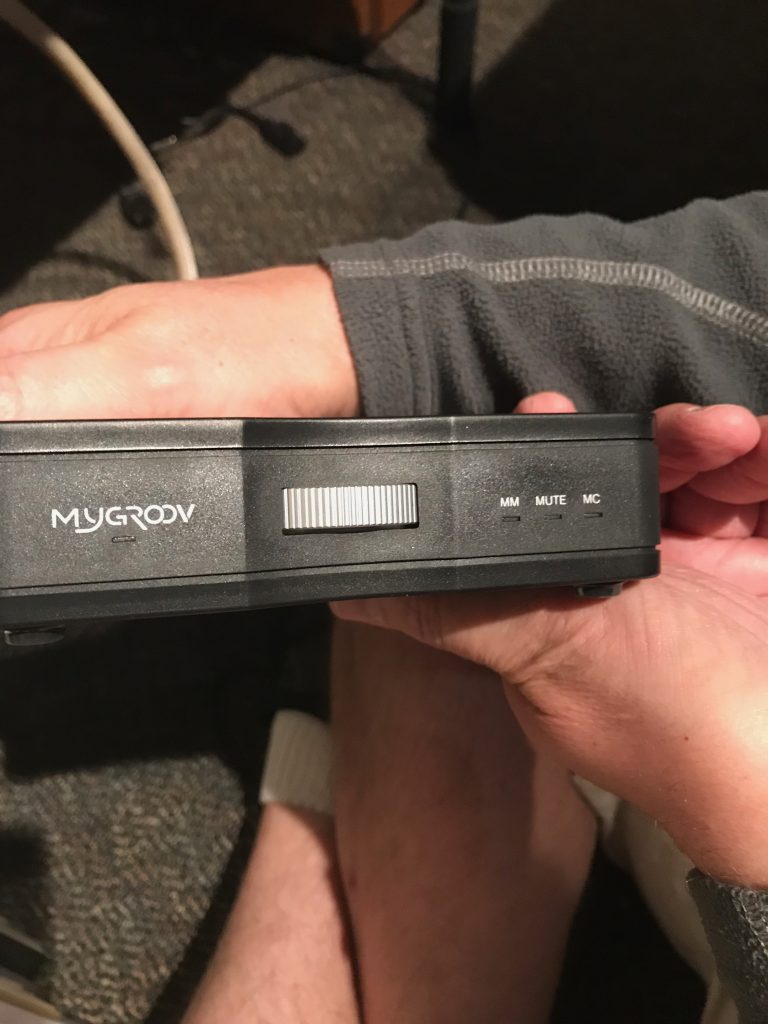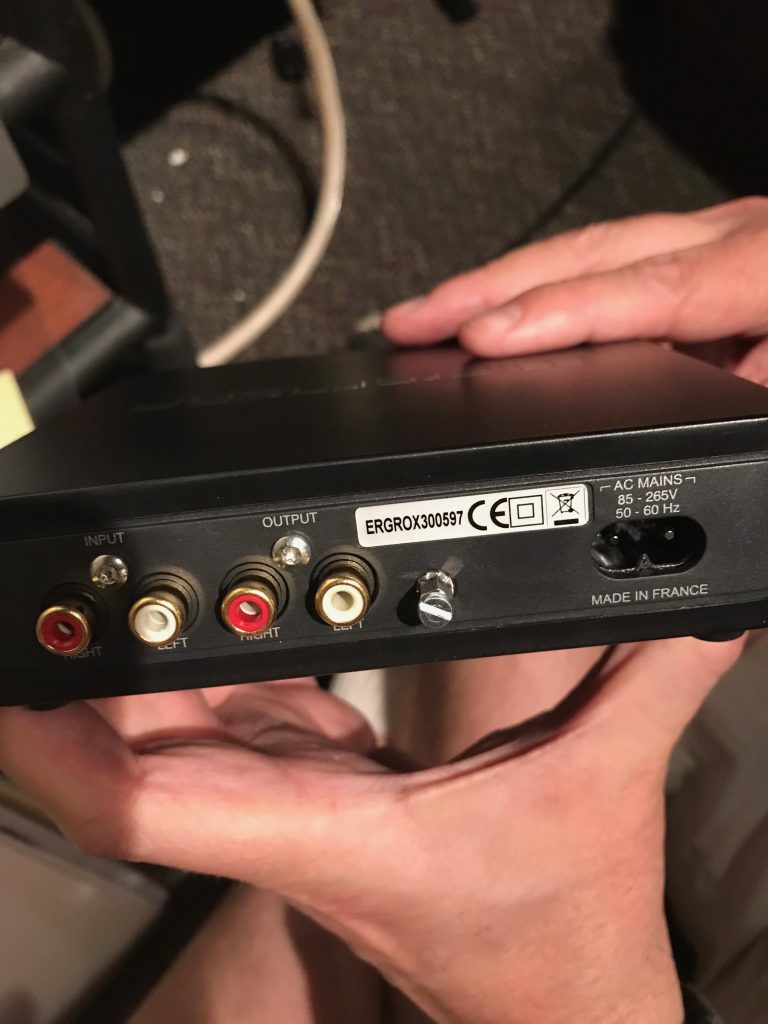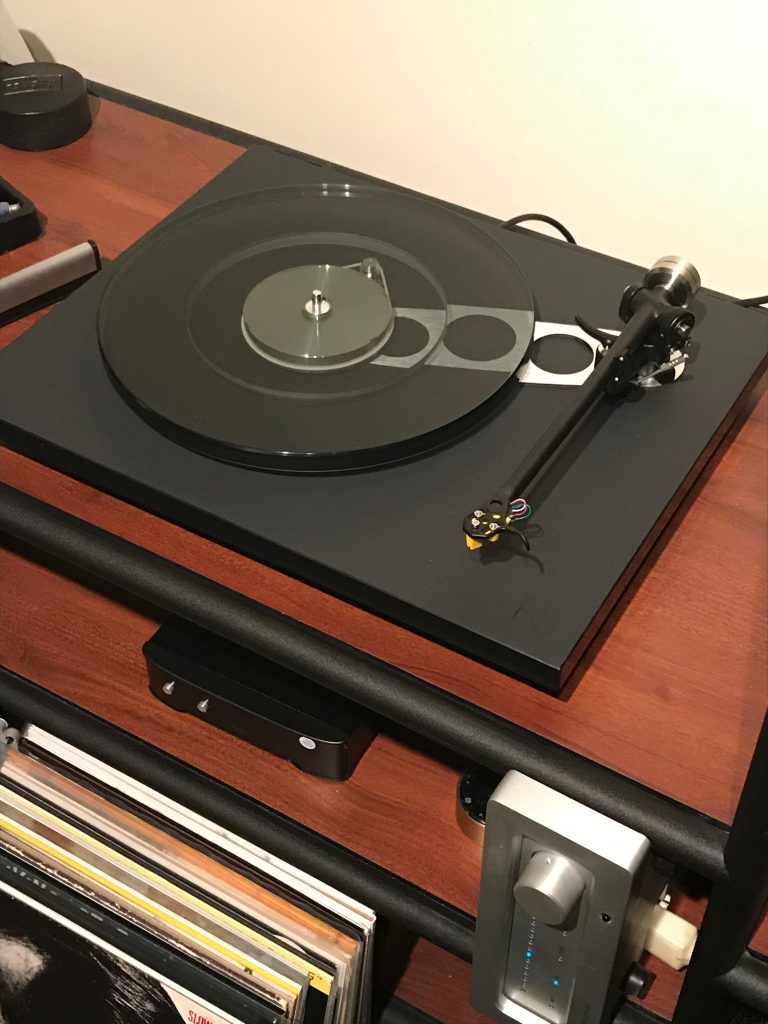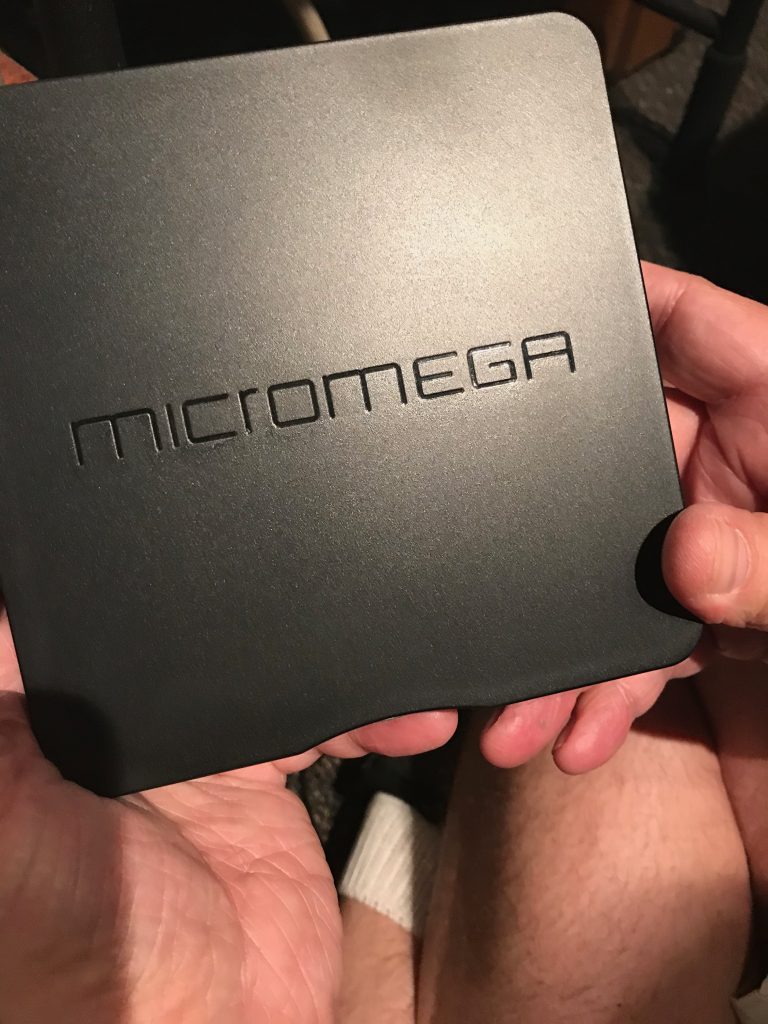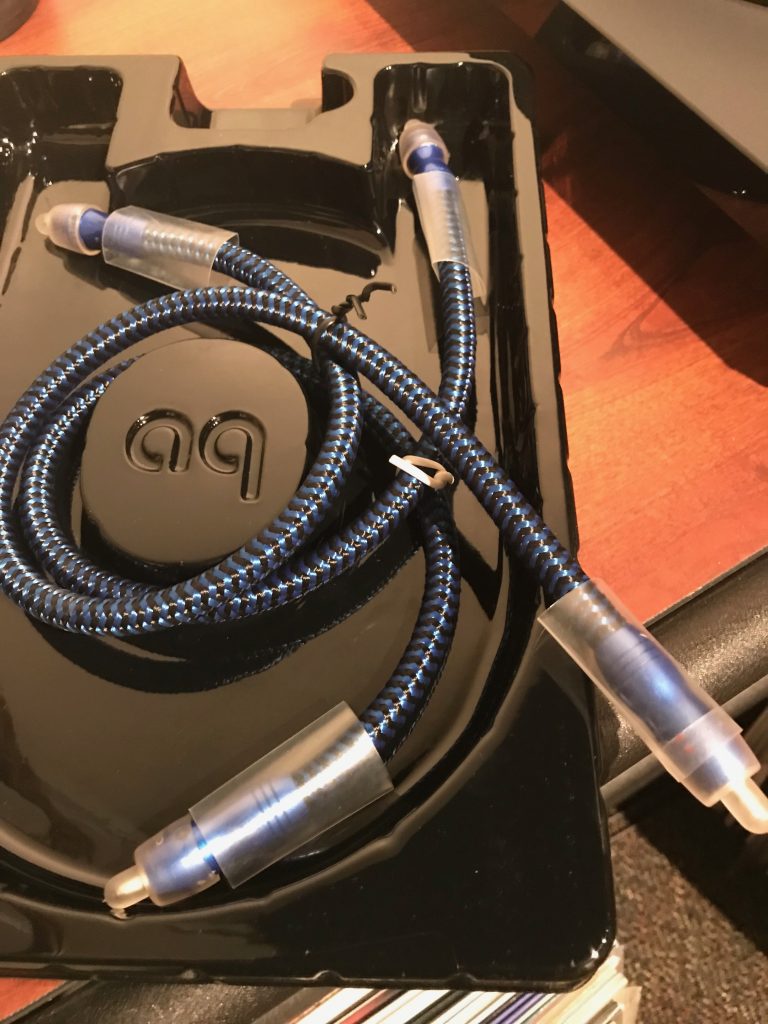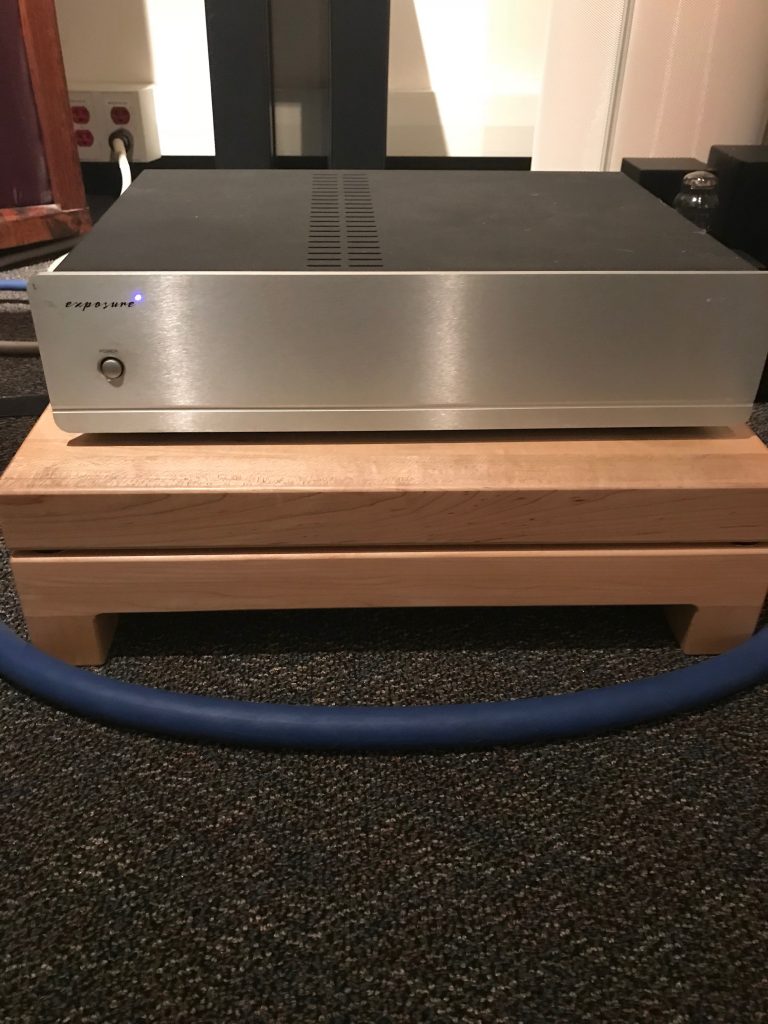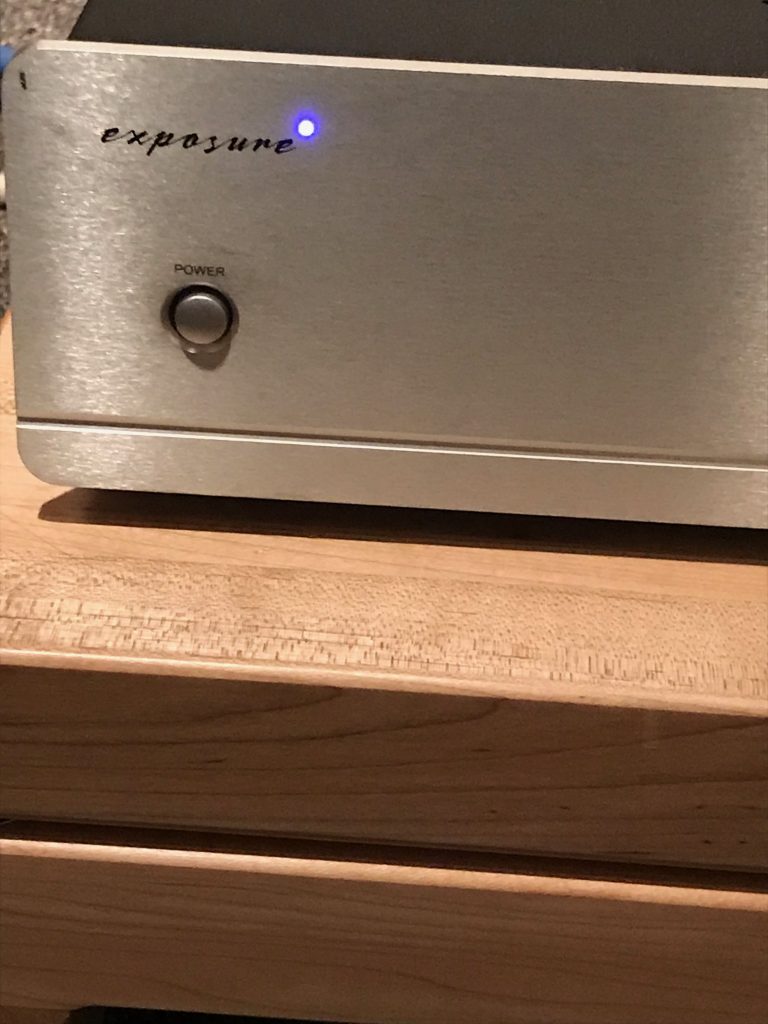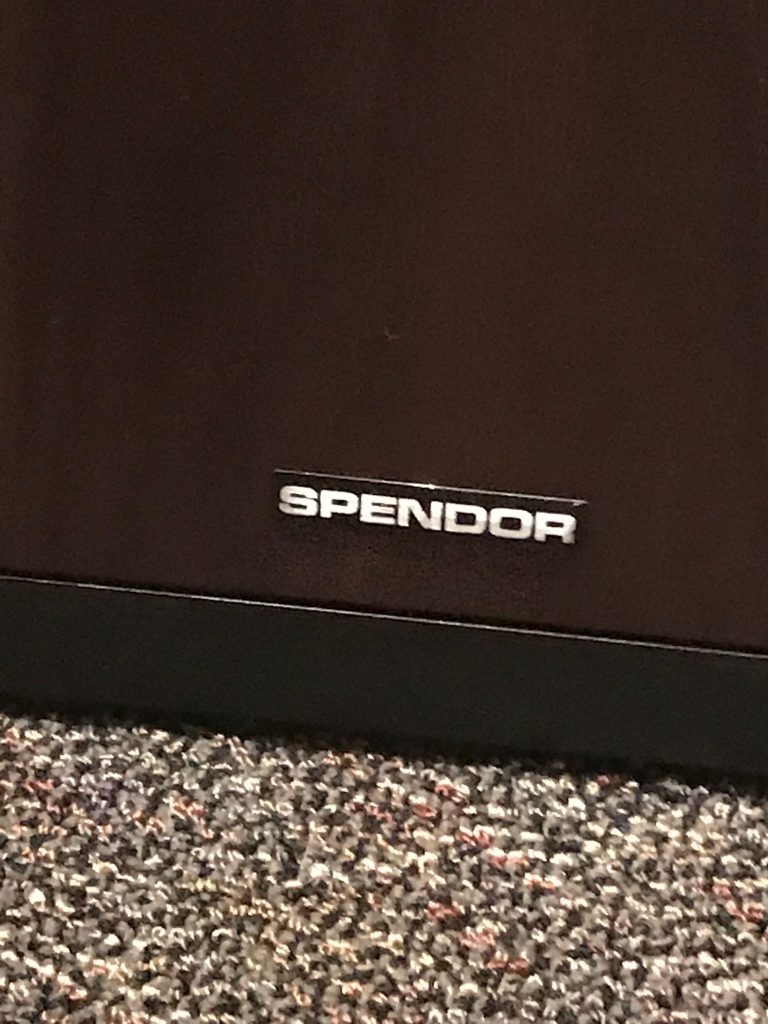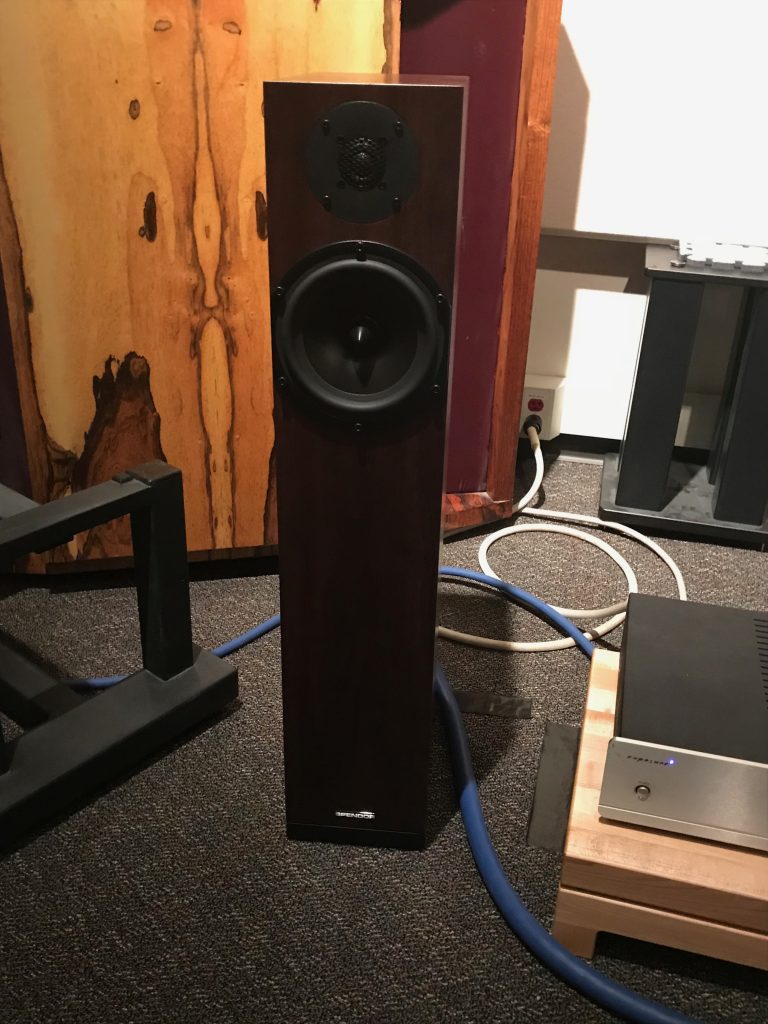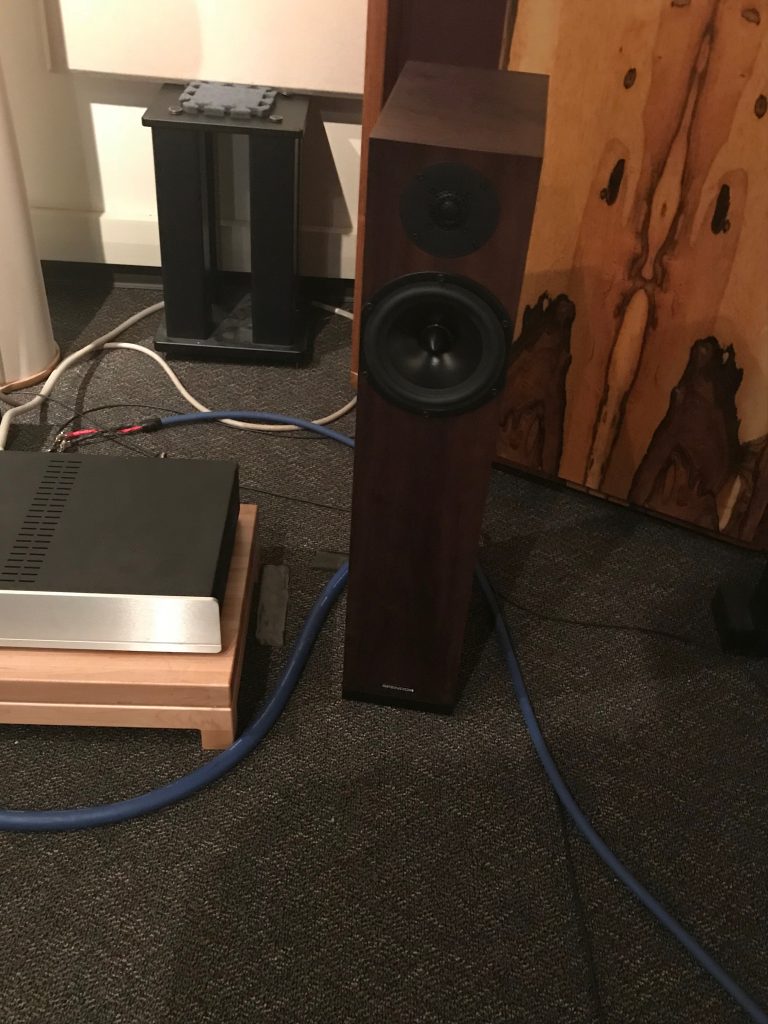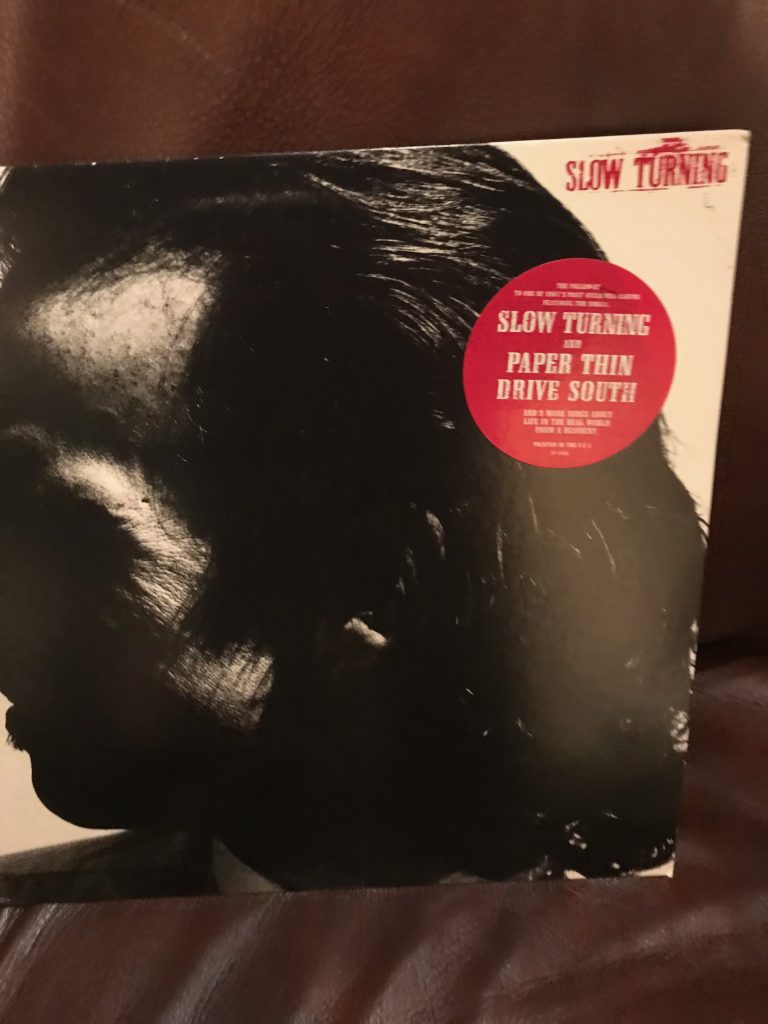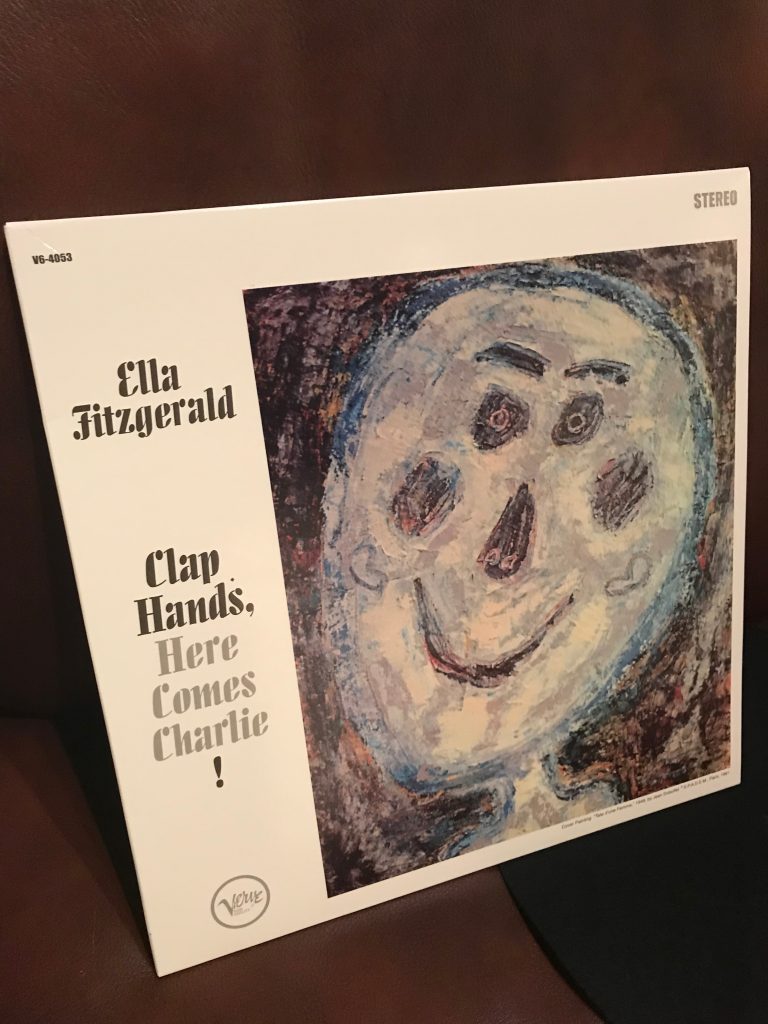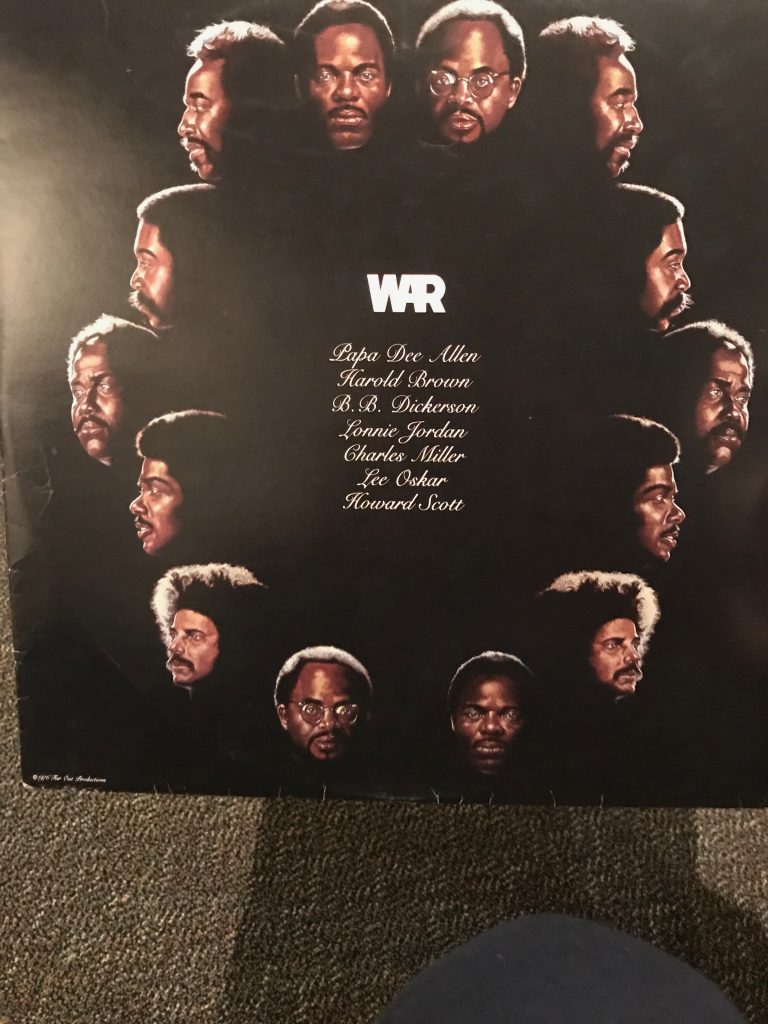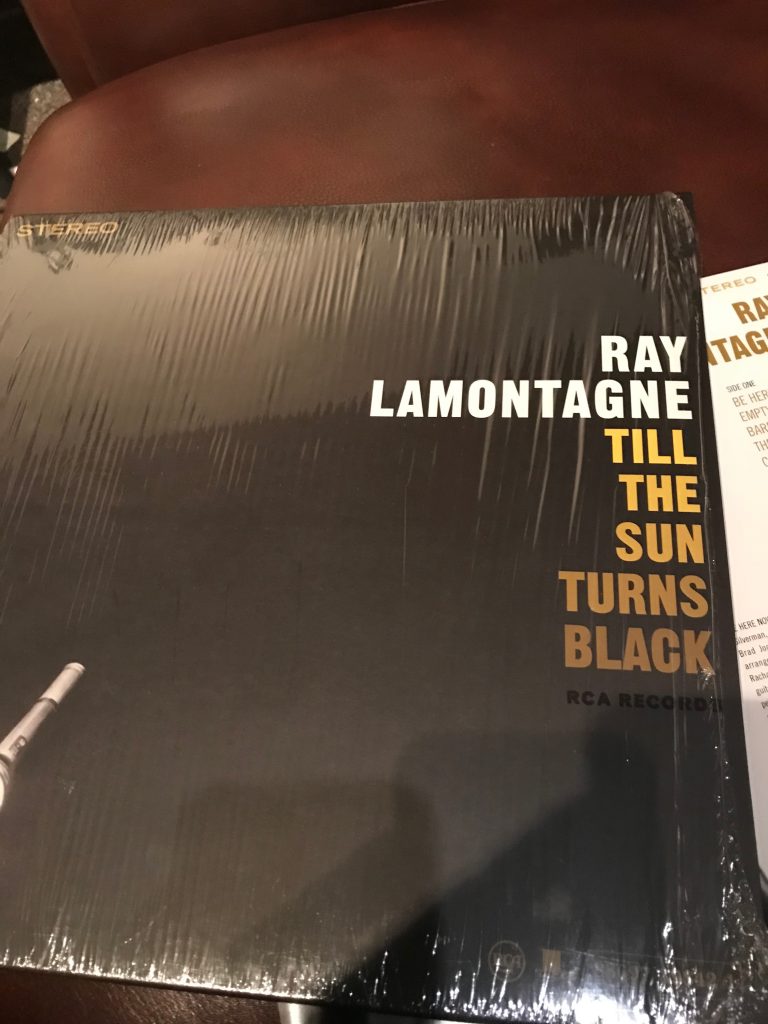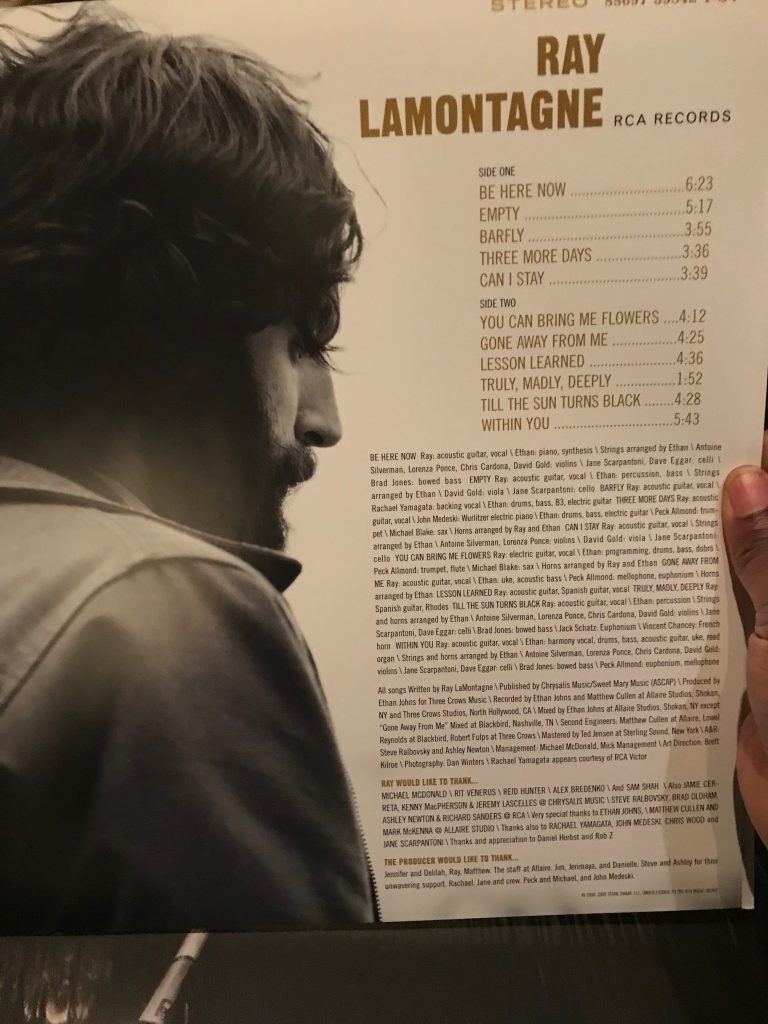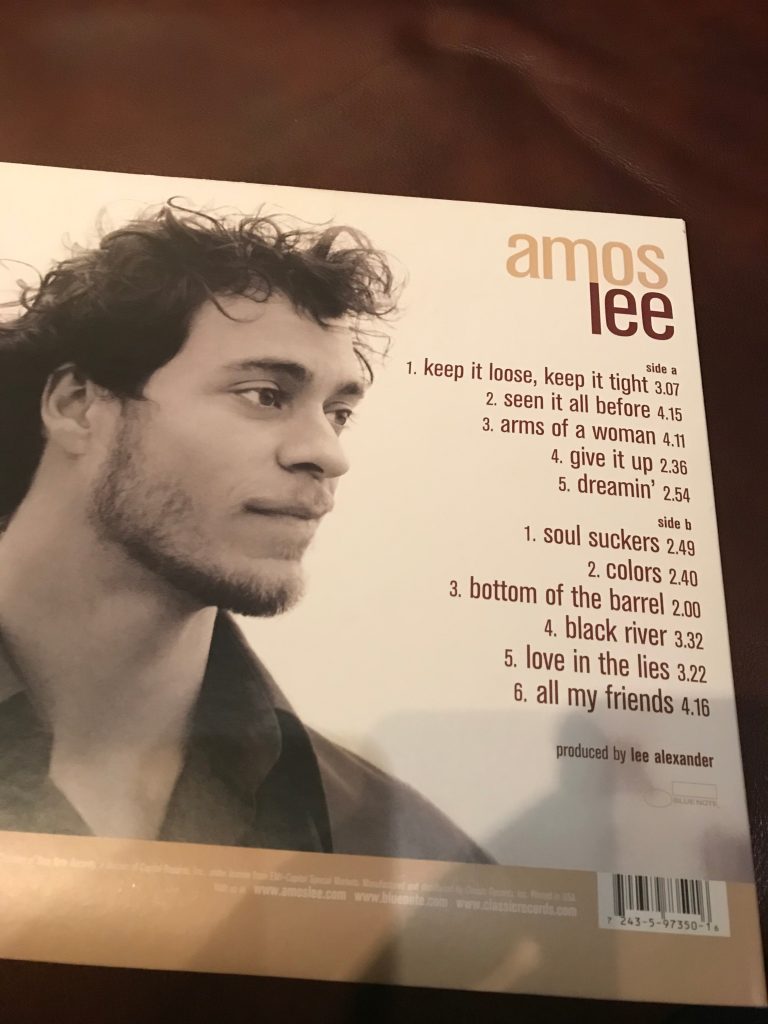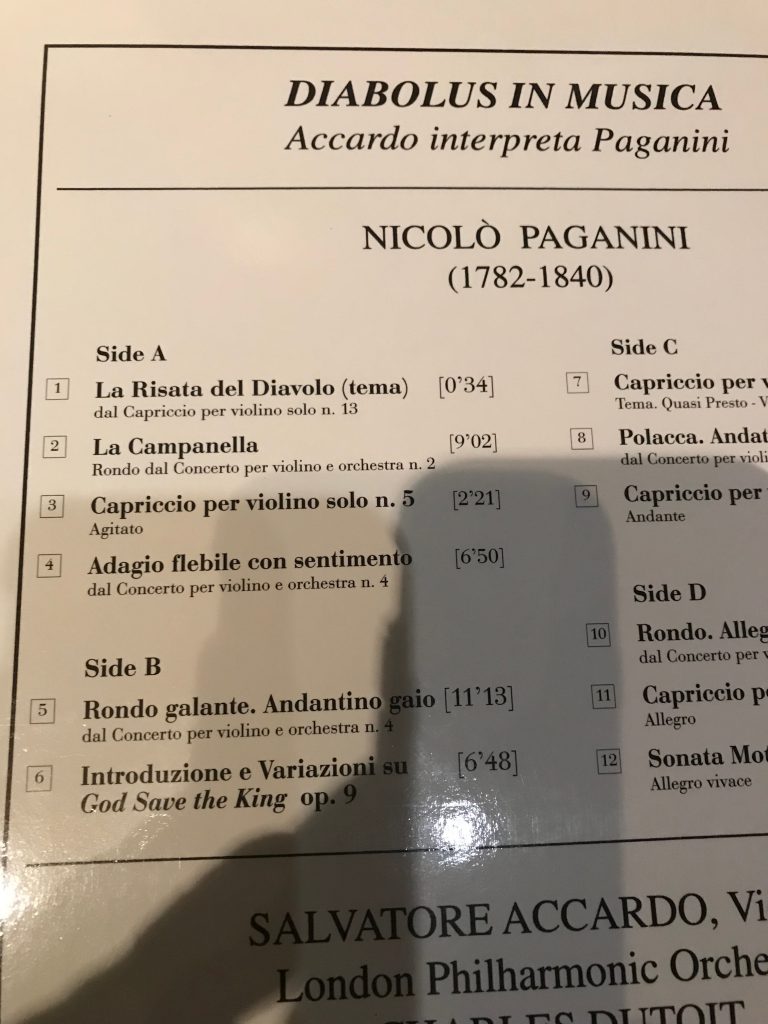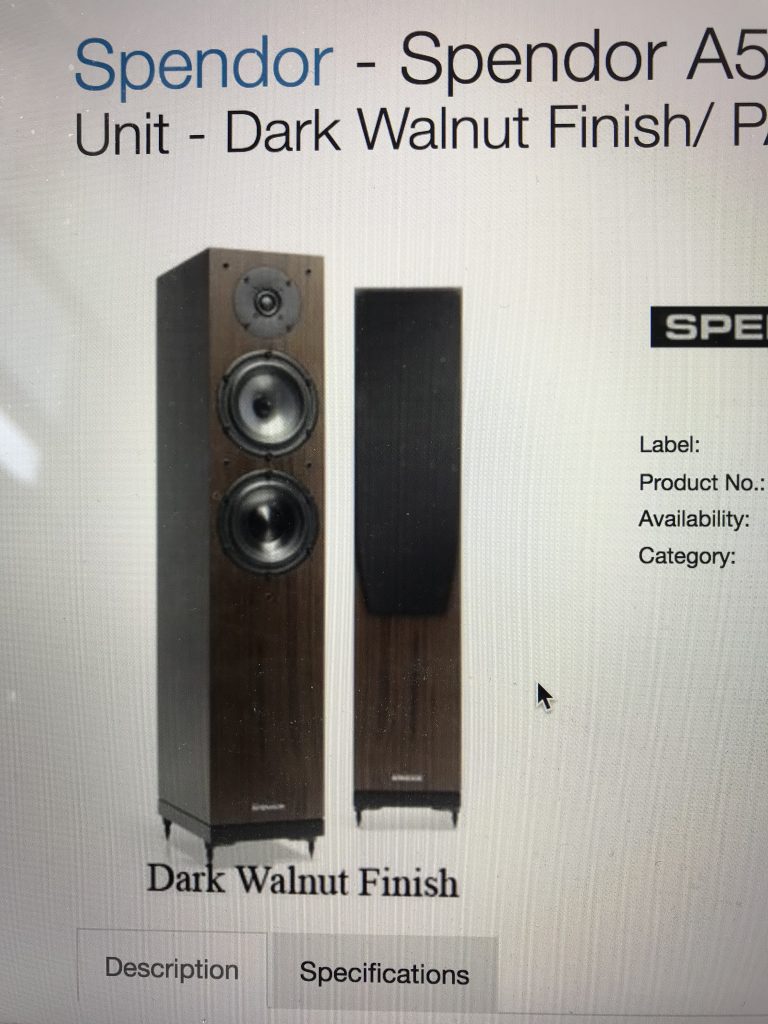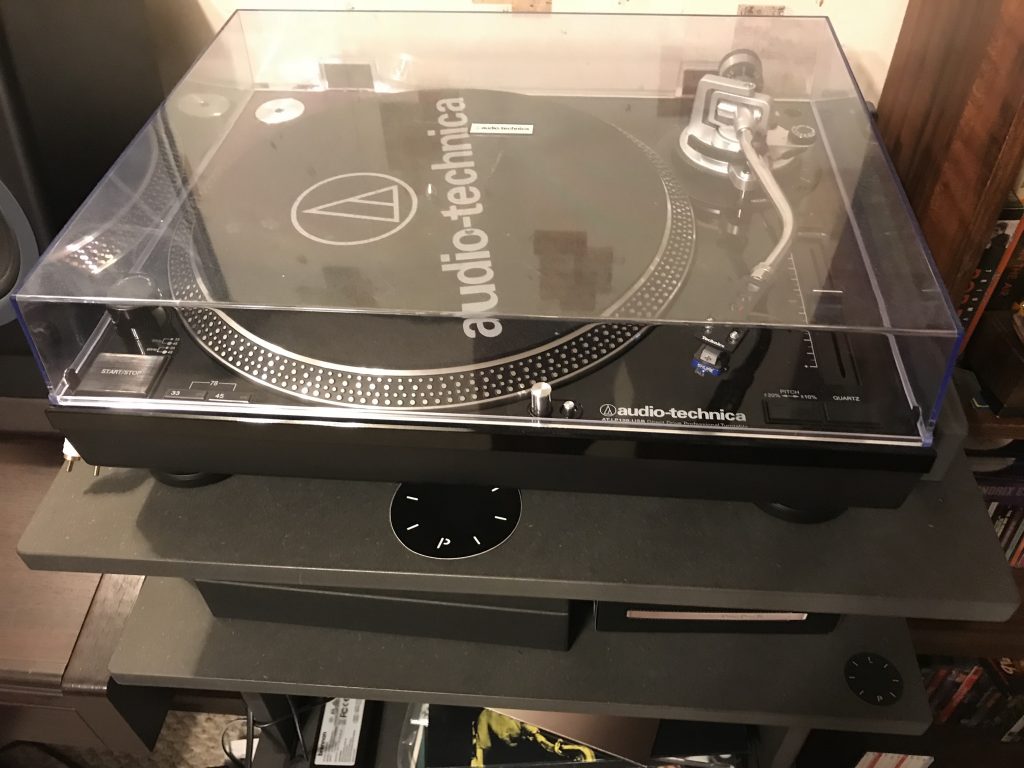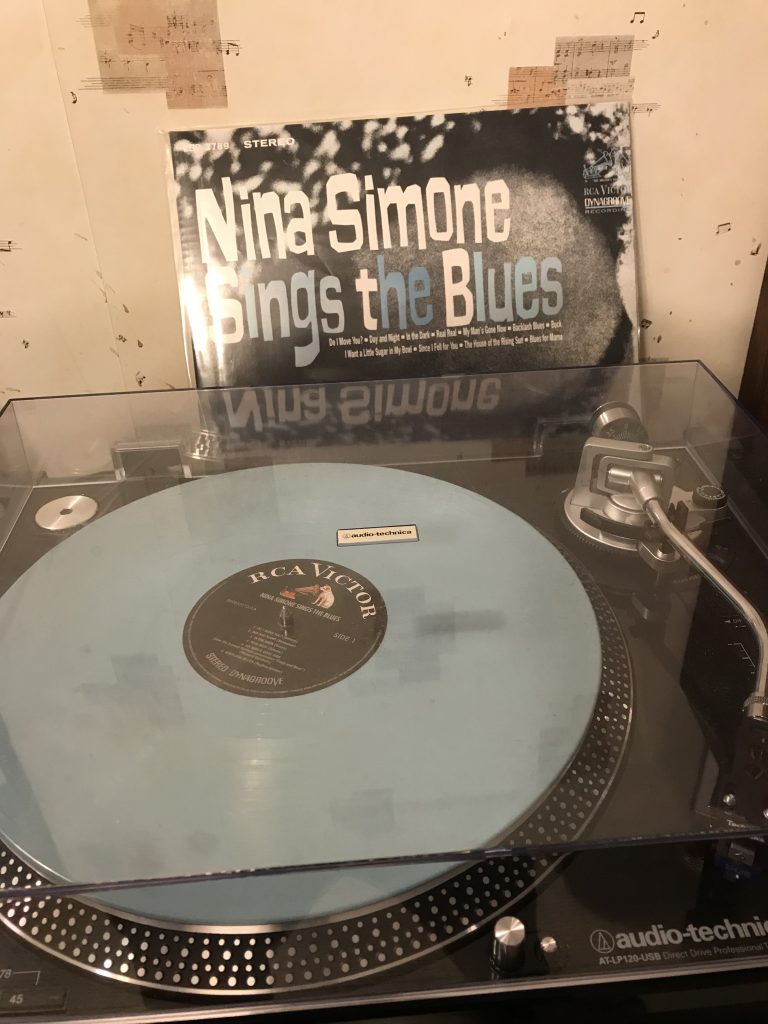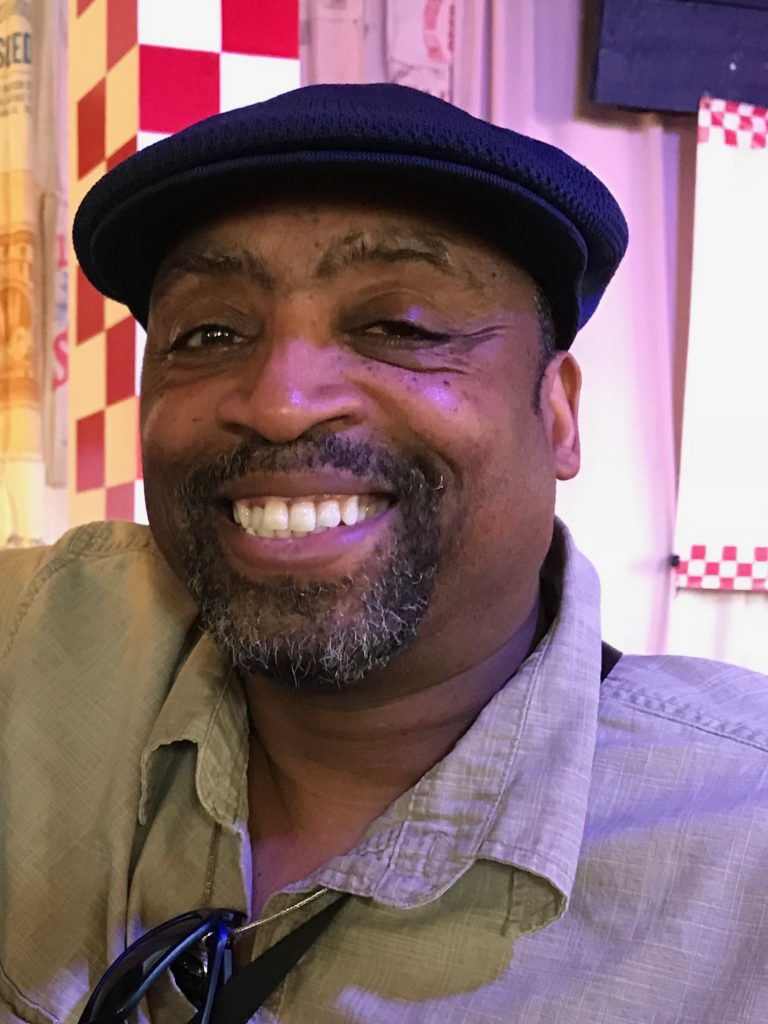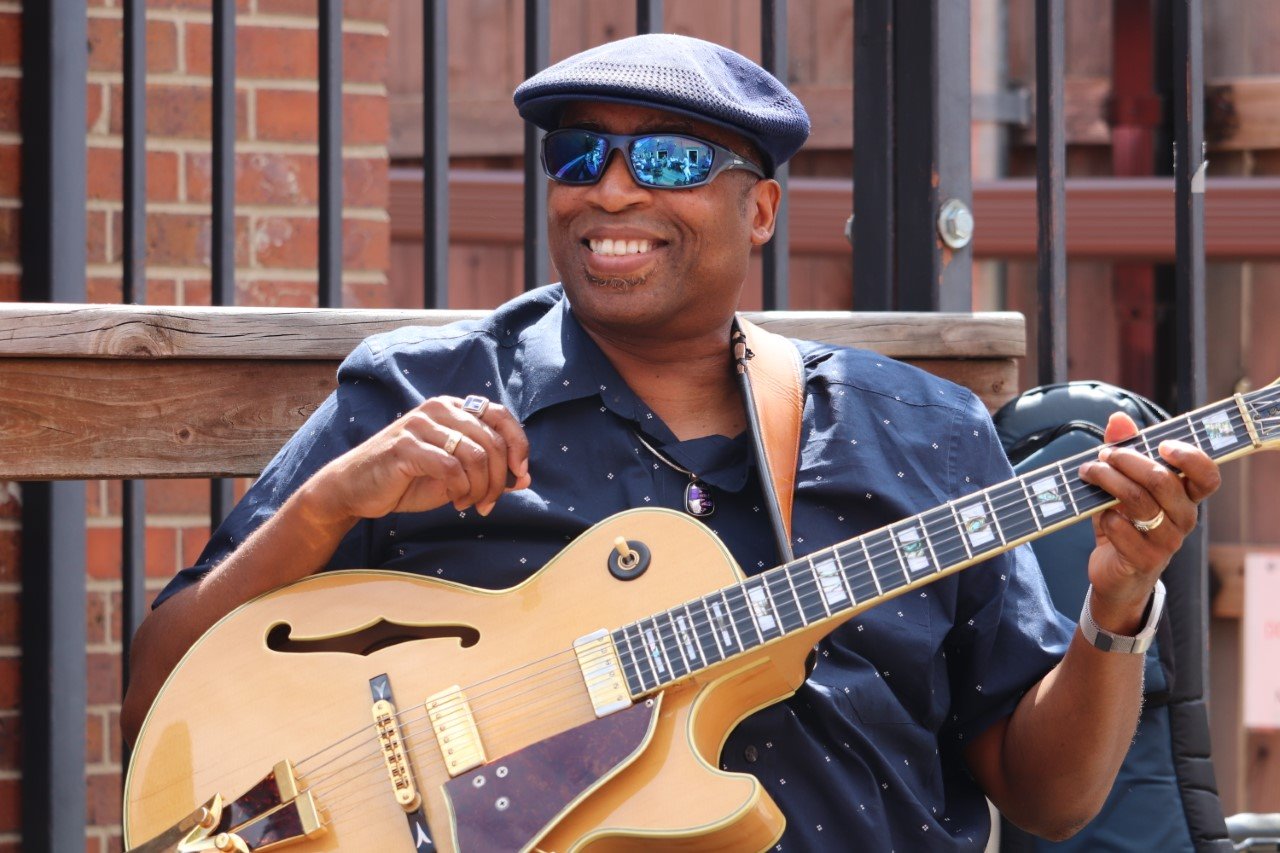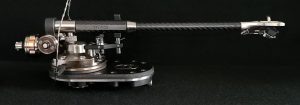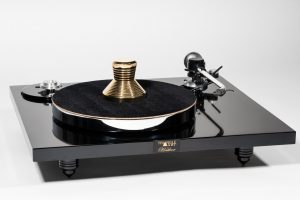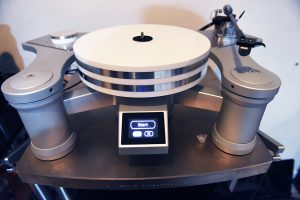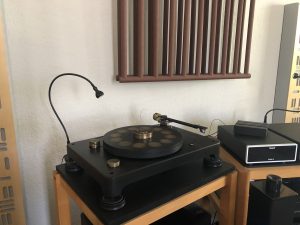As I mentioned when I introduced myself to this journal, I'm a rookie when it comes to high tech audio equipment—but I'm a fast learner. And l have already learned pretty quickly how deep this rabbit hole goes when one steps into the arena of sound and technology. Now, I'm not one for keepin' up with the Joneses. But I did wanna step up my game just a bit. So I took a plunge in the world that lay well beyond my treasured (and now vintage, "in mint condition") Technics SL-1200MK2 that I bought in Atlanta in '95…
…and the Audio-Technica AT-LP 120-USB that I bought a few years ago.
In my "direct drive turntable" world, several hundreds of dollars are quite manageable—but start talkin' too many thousands and things start to get kinda ugly. And don't even look at me right now for anything five figures. I'll act like I don't know you—I really will.
I met the notorious Michael Fremer in Salina Kansas at last year's Blues Festival at Chad Kassem's two-day bash. Since then, I got totally hooked on his Analog Planet website, and, along with this website, have used it heavily as a crash course in educating myself on all things new in audio and vinyl. I was watching one of his numerous "roving reporter" videos (where he visits seemingly every world-class turntable-making facility), and one particular time I got totally hooked when he went to the Rega plant in February 2017 South End-On-Sea in England and spent several hours walking through the entire joint with co-founder Roy Gandy. He also spoke at length with Terry Bateman, Rega's chief electronics designer.
I don't really know why this one hooked me, but it did. I became obsessed: I wanted the P6 instantly, and began plotting on how I might be able to afford and secure one—mainly so that I might learn through direct personal experience what its like to drive a more expensive and higher quality performance turntable.
So I called my buddy Chad Kassem at Acoustic Sounds in Salina and asked if he carried their line of products (Surely he did? I mean, what doesn't he have? He wouldn't have missed an opportunity to be in collaboration with a fine turntable maker like that, would he?) Well, as it turned out, there was a brief past flirtation between his company and the Rega people, and for one reason or another, they didn't see eye to eye, and something fell through the cracks—they never were able to get on the same page. Long story short, I implored him to see what he could do to help me get my hands one of the Planar turntables that I thought I might be able to afford. I knew I couldn't handle the tab for the newest upcoming versions at the time (the P8 or the P10), but that was no matter—those weren't the ones I fell in love with anyway—the Planar 6 was the girl for me.
I paid rapt attention when Rega owner Roy Gandy promoted the book he co-wrote about their factory and the philosophy behind their turntables, entitled A Vibration Measuring Machine, by Bill Philpot, Paul Messenger and Roy Gandy.
Meanwhile, I reluctantly accepted the fact that Chad wasn't exercising a working relationship with the British company, but I was steadily building my own strategy to get closer to my goal. First, I watched every promotional video I could, including a) Fremer's 5-part series chronicling his visit to the company, b) Rega's own videos promoting the planar 6, c) several random YouTube reviews of the P6's greatness and d) I got on AudioAdvice and watched with glee the promotional video of the Planar 6.
I searched on the web and found a couple of places who did sell the P6 and many other Rega products in the US, specifically TSO (The Sound Organization) in Arlington, Texas. I was actually planning on flying out there to see this brick-and-mortar store. When I visited their website, I also discovered that they sold copies of the Rega history book I mentioned earlier for sixty bucks. I purchased it immediately in hopes of getting closer to the work ethic and philosophy that the company espouses.
And then a miracle occurred. I saw the live YouTube feed of Chad Stelly letting the world know that a recent merger had been made—Acoustic Sound was now officially carrying the Rega Planar 6!—I was thrilled! (And did I have just a little bit to do with that reunion? Methinks so!) Stelly gave a wonderful and enticing presentation on the live feed, and I couldn't wait to jump in my car and get down to the Salina plant—less than an hour away from my Manhattan.
After a few conversations, the "hanging Chads" (Stelly and Kassem) made me an offer I couldn't refuse (most likely as a way of thanking me for the impetus, something I will always be proud of!). I arrived at 11 a.m. on a Friday to pick up my turntable. Stelly was there to meet me. Kassem was preparing to leave a few hours later to board a private jet that a friend of his owned who was picking him up to go out of town (what a life he has!).
When I entered the room he had already open the box in preparation of my arrival, and the plinth was sitting on his office table…
…but he hadn't placed the glass platter on yet, so the shiny aluminum bracing that stretched angularly across the plinth from motor to tone arm was exposed, and it was beautiful.
I picked up the thin, square plinth and it felt incredibly light—made of a polyurethane foam core. This was when I fully realized the dual layer plate-glass platter was where the bulk of the overall turntable weight would be.
We then stripped off the red strips of tape that had secured the RB330 tone arm, which was already equipped and preset at the proper angle in England.
Chad eventually double checked it anyway using the protractor they supplied in the box. We pulled the guard off the Rega Exact 2 needle cartridge, which works best with the moving magnet.
Admittedly, I saved about eight hundred bucks by not stepping up to the Ania cartridge, but since my MM phonostage preamp can handle MM or MC, I'm safe to upgrade later when I get a bit more money, and I probably will buy a Rega FONO MC stage.
We first adjusted the balance weight so that it floated the tone arm 1 millimeter above the LP. Next, we set tracking force dial and the bias force adjustment slider to "zero," and then re-adjusted the measurements to perfectly match the dial and slider to the recommended setting of 1.75 grams.
We then unwrapped the wool mat that came supplied with the turntable and pushed it over the stumpy, shiny spindle.
Once we had everything assembled on the turntable we focused on the other components—the turntable speed control/power source unit and the Micromega MyGroov preamp.
We quickly realized that the Neo PS2 power supply cable was mistakenly missing from the box. Stelly quickly called the main office, where he explained the dilemma and they vowed to send another one immediately. Meanwhile, he pulled a fresh one from another sealed Rega turntable box, and we were in business.
We went to a spacious listening room where Stelly already had several other turntables setup for various purposes: let's just say I'm pretty sure all of them were more expensive than mine. I saw the VPI Classic with a JMW 10.5i SE tonearm; I also eyed a VPI Scout; and I then I saw an SME 30/21A with a series V12 tonearm attached—a bundle that was north of $50k—the air is starting getting thin up there now!
After he cleared some space for my equipment...
...he set up the MyGroov MM/MC Preamp and used high quality Audioquest Diamondback blue RCA cables.
There was a pair of floor-stand speakers already setup in the room, made by Spendor A4. They were set up separately in mono, and driven by individual amplifiers made by Exposure (3010 S mini amps)
...that were 100 watts each, and connected to thick blue Cardas snake cables.
Once my turntable was paired with them, it was incredible-sounding.
We first listened to a John Hiatt tune from the LP Slow Turning [I believe it was it the title track?], and in a freaky twist of fate...well, I did mention that Chad #1 (Kassem) was on his way out the door to board a private jet with his friend, right? Well guess where they were going? To see John Hiatt perform the very album that Chad #2 and I had on my turntable—in completion and in sequence—performed for the 30th Anniversary live at the Oriental Theater in Denver, Colorado with legendary artist Sonny Landreth on guitar!!
So meanwhile, back to our story. The album sounded—at least I thought it sounded—great. But then Stelly suddenly said, "You know, I think I'm gonna adjust the counterweight." I wasn't sure why or what it was that he heard that caused it, but I wasn't going to object. So I watched him turn the silver weight just barely, and what happened next was kinda amazing—the bass register spoke up with much more clarity than before—I didn't even know what I was missing until I did. Stelly carefully explained how—when you're dealing with this level of performance—even a microscopic adjustment on the counterbalance changes the way the needle sits in the grooves of the vinyl, and thus can have an instant and significantly audible effect on the bass response or the depth and range of midrange and highs coming out of the speakers.
We then went through quite a few other albums, ranging from the Sterling Sound mastered Verve LP Ella Fitzgerald, Clap Hands, Here Comes Charlie, which was cut at 45 rpm.
Then the WAR Greatest Hits...
...followed by a couple of artists that I hadn't heard before, but severely enjoyed—Ray Montagne, the LP of Til the Sun Turns Black...
...and from a test pressing of a self-titled album by Amos Lee, a tune called "All My Friends."
One of the highlights was when Stelly put on Diabolus In Musica: Accardo Interpreta, Paganini, Salvatore Accardo interpretations of Nicolò Paganini with the London Philharmonic Orchestra on the Deustch Grammophone label. Accardo's delivery of the Violin Concerto No.2 In B Minor, Op.7, MS.48 - 3. Rondo à la clochette, 'La campanella' was exquisite, with high-flying passages in the upper stratosphere of the violin, flawlessly executed by the legendary virtuoso. What was more impressive, though, was that the P6 and those speakers pulled out the most amazing clarity of the harmonic overtones and perfect intonation of the violin with the timbre and pitch of the triangle.
Then Stelly remembered an item that was made specifically for Rega that he thought was no longer available. He produced a turntable mat that was made of a material that is officially called "Achromat." it was thin, flat, with a black matte finish. Yes, I said that—it was a black matte mat!
The Achromat 3 is millimeters in thickness, which was identical to the thickness of the standard felt mat that came with the P6. Actually, 'natural wool' is what owner Roy Gandy says is the perfect coupling between platter and vinyl disc, and says it's better than synthetic fibers. According to Rega, "Achromat is the natural progression from the original acrylic interface invented by Arthur Khoubesserian back in 1979. Refining theory he subsequently launched Achromat in 2005. Ongoing refinements in composition and application means that Achromat is now more universal and better than ever. Theory: The stylus accelerates at up to 20,000g. This means your groove wall is not so much caressed but more akin to being pummelled by a road hammer creating travelling shock waves. When there is a material change (the record sitting on a felt mat, say, these waves are reflected and energy reflected from the bottom of the record (a mere 2mm thick) is sensed by the stylus and heard as colouration. Can we prevent his reflection? Achromat is the ideal material to absorb energy from the record. There is no better. But it is only 3-5mm thick and this is where the science kicks in. Millions of tiny bubbles within create complex pathways and that's where the energy gets lost as heat. In this way, Achromat acts like a considerably thicker mat. Its job is complete. No other mat is like it and all it takes is a simple A-B comparison to demonstrate the differences against other supports. Longer term listening allows subtle nuances as well as greater bass intelligibility to be appreciated.
In 2009 Achromat came top in a mat comparison in HiFi Choice and then went on to win the Gold Award for Accessory against all comers. And of course there are the testimonials from happy customers. It has become the mat of choice for Linn LP12 owners and also Technics SL1200 turntables. No wonder Achromat is the World's top selling mat.In use…Two thicknesses are available: 3mm and 5mm.Achromat 5mm: This is the standard recommended thickness. In tests the 5mm consistently betters the 3mm mat. So wherever possible go for the 5mm.
Achromat 3mm: Why the 3mm, then? Arms with no VTA (Rega) are awkward to adjust. They are commonly found on decks with felt mats about 3mm thick. Decks with short spindles where 5mm would cause problems. Note: When "tnt" reviewed Achromat they concluded that the benefits of the thicker mat outweighed the benefits of the thinner mat with a clamp! Achromat 1200: Some turntables, (Garrard 301 / 401 and Technics SL1200), have a platter with a machined lip which precludes the use of the normal Achromats (which have a diameter of 293mm). For these turntables we have launched a version of the mat with an undercut to overcome the problem. Incredible as it sounds, a £70 Achromat really does benefit every kind of turntable from the most modest to truly exotic creations costing £10,000 and upwards. (That being the case, what does that say about those designs in the first place?)"
See, this is the kinda fun stuff that one can only get by being in the actual presence of a knowledgeable and passionate cat like Stelly—it's why Kassem hired him, and I totally dig that. In fact, the Chads are rapidly rubbing off on me, and the Acoustic Sounds grounds are like a fantasyland where sometimes all your audio dreams—if they're the right size, right type, and timed perfectly—can come true. And don't we need more of that goodness in this world?
So as we finally wrapped things up in the listening room, something suddenly dawned on me, and I said, "Stelly, there's no way this stuff is gonna sound this good when I get it home in my basement!" He just kinda nodded and smiled, with the kind of wisdom and understanding that one has when one knows the truth has just been spoken between comrades. Indeed, the listening room at Acoustic Sound is such a special place—they really know their way around this type of stuff, and I was fortunate enough to spend three uninterrupted hours in the playground bathing my lobes in some primo soundwaves. The best part was that Stelly and Kassem were as excited as I was to see me so thrilled to take my first infant steps into big boy world, and they were like proud surrogates encouraging a baby who just opened his eyes to hear for the first time. And believe me, there's more where this comes from—like I said, I'm a quick learner. Which means I'm gonna be back there to visit them again soon. Probably to pick up my first set of Spendor A5 floorstands.
Damn rabbit hole….
So I made my way home down Interstate 70 East back to Manhattan, and, wouldn't you know it—it took me more than a few days to convince myself to unpack the boxes of turntable, phono stage and cables.
I had my reasons, though. Mainly it was because I wanted to relish a bit longer just how fun it was back in Salina; I tried to keep both the stunning sound ringing in my ears and the stirring feeling in my heart as long as I could. Secondly, it was that I wanted to wait until I found an appropriate turntable stand to sit this sweet stuff on—my Audio-Technica AT-LP 120-USB was already occupying my treasured Line Phono turntable stand I had recently bought (more about that great revelation later.)
After chatting with my other guru (your own fearless leader Dr. David Robinson), I purchased another stand—this time the four-shelf Pangea Audio Vulcan, and a set of black Audio Advisor Sonic Saucers isolation discs to deal with those pointy feet that can seriously cut into your nice carpet or hardwood floor (lest you be found wanting). So, for the time being, instead of experiencing the luxurious "Spendor splendor," I will be diving into the somewhat shallower end of the sonic pool with my Audio Engine A5+ bookshelf speakers (which aren't shabby by ANY means, mind you—and was a serious step up when I bought them!)
So tune in next time for my latest adventures, as I chase the dragon in my quest for the best in sonic soul scenario!
This is your Dr. G. signing off for now. Until then, keep on swingin'!




